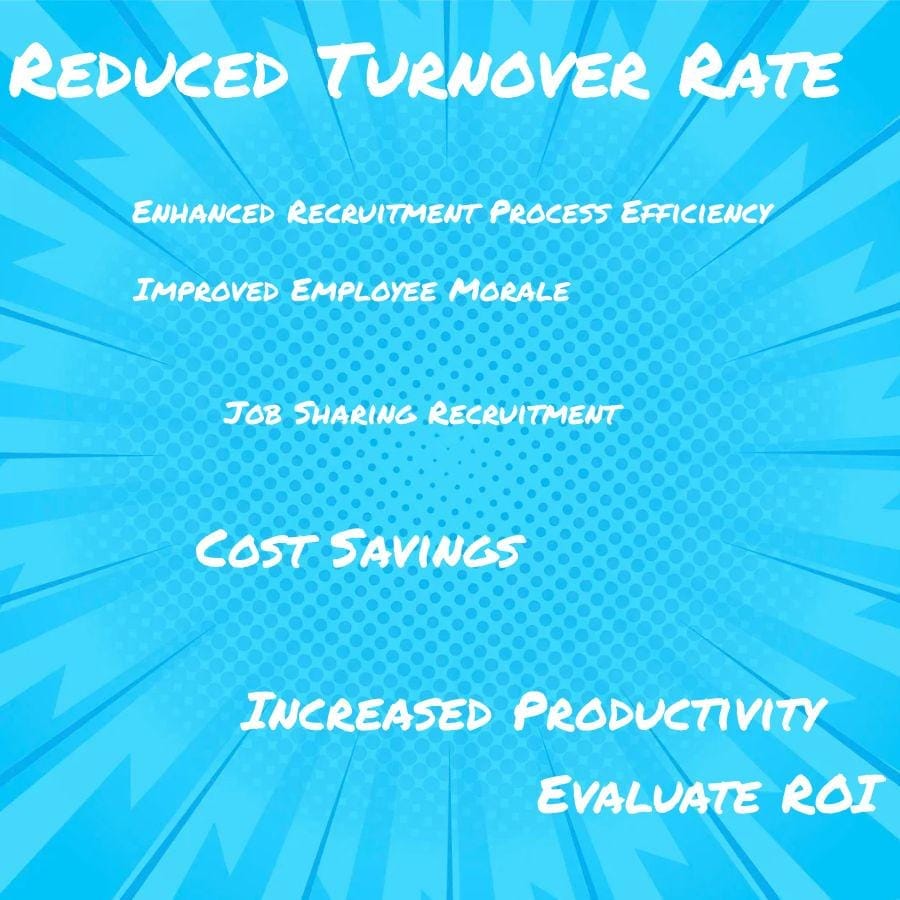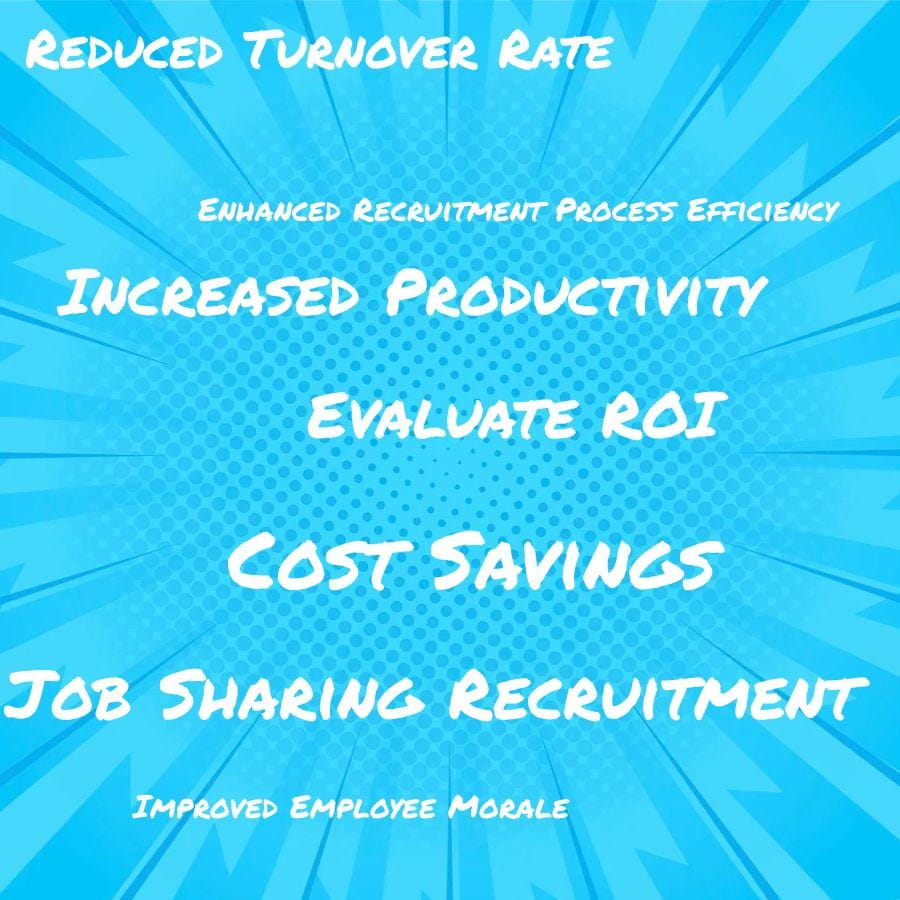To evaluate the return on investment (ROI) of job sharing recruitment initiatives, one should consider factors such as the number of hires, cost per hire, time to fill positions, and quality of hires. Additionally, measuring employee engagement and satisfaction with job sharing programs can provide insight into the effectiveness of these initiatives.
Recruiting new employees is an essential part of any business, but it can be a costly endeavor. Job sharing recruitment initiatives offer the potential to reduce costs while still finding quality talent.
However, many companies struggle to evaluate the return on investment (ROI) of these strategies. In this blog post, we’ll look at how you can measure the success of job sharing recruitment initiatives and determine their ROI.
We’ll explore key metrics to consider when assessing your efforts and discuss best practices for optimizing your job sharing recruiting strategy.
Cost Savings


This is because when two people share a job, the organization only needs to pay one salary instead of two. The organization may be able to reduce overhead costs associated with hiring and training new employees.
Job sharing also reduces the need for additional office space or equipment that would otherwise be necessary if two separate positions were filled. Job sharing can help an organization save on benefits costs since they are typically shared between both employees in a job-sharing arrangement.
By evaluating these cost savings, organizations can determine their return on investment (ROI) from implementing job-sharing recruitment initiatives.
Increased Productivity
Job sharing is a type of flexible working arrangement where two or more people share one job role, with each person taking responsibility for different aspects of the role. This type of arrangement can lead to increased productivity because it allows employers to tap into a larger pool of talent and skillsets than would otherwise be available in a single employee.
It also allows employees to divide up tasks and responsibilities between them, which can help reduce workloads and increase efficiency. Job sharing recruitment initiatives may result in improved morale among staff as it gives them more control over their work-life balance and provides an opportunity for collaboration that might not have been possible with just one employee in the role.
Job sharing arrangements often require less training time than hiring multiple employees since there is only one position to fill instead of several. All these factors contribute to higher levels of productivity which can then be measured against the costs associated with implementing such initiatives in order to evaluate ROI.
Improved Employee Morale
Job sharing is when two or more people share the same job, with each person taking responsibility for different tasks and working different hours. This type of arrangement can help to reduce stress levels among employees, as they are able to divide their workloads and take breaks from work when needed.
It also allows employees to develop new skills and gain experience in areas that they may not have had access to before. Job sharing can create a sense of camaraderie among colleagues as they collaborate on projects together.
When evaluating the return on investment (ROI) of job sharing recruitment initiatives, improved employee morale should be taken into account. A happier workforce is likely to be more productive and motivated, leading to increased efficiency in the workplace which could result in higher profits for the company over time.
Furthermore, having an engaged workforce could lead to better customer service experiences which could attract more customers and increase sales revenue for the business. Improved employee morale may also lead to lower staff turnover rates which would save money by reducing costs associated with recruiting new staff members regularly.
Reduced Turnover Rate
One way to measure the ROI of job sharing is to look at the reduced turnover rate. Reduced turnover rate means that fewer employees are leaving a company, which saves money in terms of recruiting and training new staff.
When an employee leaves, it costs time and resources to find a replacement, so reducing turnover can save money in the long run. When employees stay with a company for longer periods of time they become more experienced and productive, leading to increased efficiency and profitability.
Therefore, measuring the reduced turnover rate associated with job sharing recruitment initiatives is one way to evaluate their ROI.
Enhanced Recruitment Process Efficiency
This involves streamlining processes, such as reducing time spent on administrative tasks and improving communication between recruiters and candidates. By implementing job sharing initiatives, organizations can reduce their overall costs associated with recruiting new employees while also increasing their chances of finding qualified candidates.
To evaluate the return on investment (ROI) of job sharing recruitment initiatives, organizations must consider both direct and indirect costs associated with the initiative. Direct costs include any expenses related to implementing or maintaining a job sharing program, such as software licenses or training materials for recruiters.
Indirect costs include any additional time spent by recruiters in order to manage a larger number of applicants or review more applications than usual due to increased efficiency from job sharing programs. Organizations should also consider how much time is saved through improved efficiency when evaluating ROI for job-sharing recruitment initiatives.
For example, if an organization implements a system that allows them to quickly review resumes and schedule interviews with qualified candidates in less time than it would take without the system, then they will be able to save money by not having to pay recruiters overtime wages for extra hours worked during peak hiring periods. If an organization is able to fill positions faster due to improved efficiency from job-sharing programs then they may be able to avoid costly delays in production or other operations caused by unfilled positions within their company structure.
Increased Diversity in the Workplace
This means that employers are actively seeking out candidates from a variety of backgrounds, including those who may have been traditionally underrepresented or excluded from certain job opportunities. By doing so, employers can create a more inclusive and equitable work environment for all employees.
When evaluating the return on investment (ROI) of job sharing recruitment initiatives, it is important to consider both short-term and long-term impacts. In the short term, these initiatives can help reduce costs associated with recruiting new talent by allowing employers to tap into existing networks and resources.
They can also help attract top talent who may not have otherwise applied for a position due to lack of access or awareness about available opportunities. In the long term, increased diversity in the workplace can lead to improved employee engagement and productivity as well as better customer service outcomes due to greater understanding of customer needs across different demographics.
It can also result in higher levels of innovation as diverse perspectives bring fresh ideas into an organization’s decision making process. Having a more diverse workforce helps build trust among employees which leads to stronger team dynamics and collaboration within an organization overall.